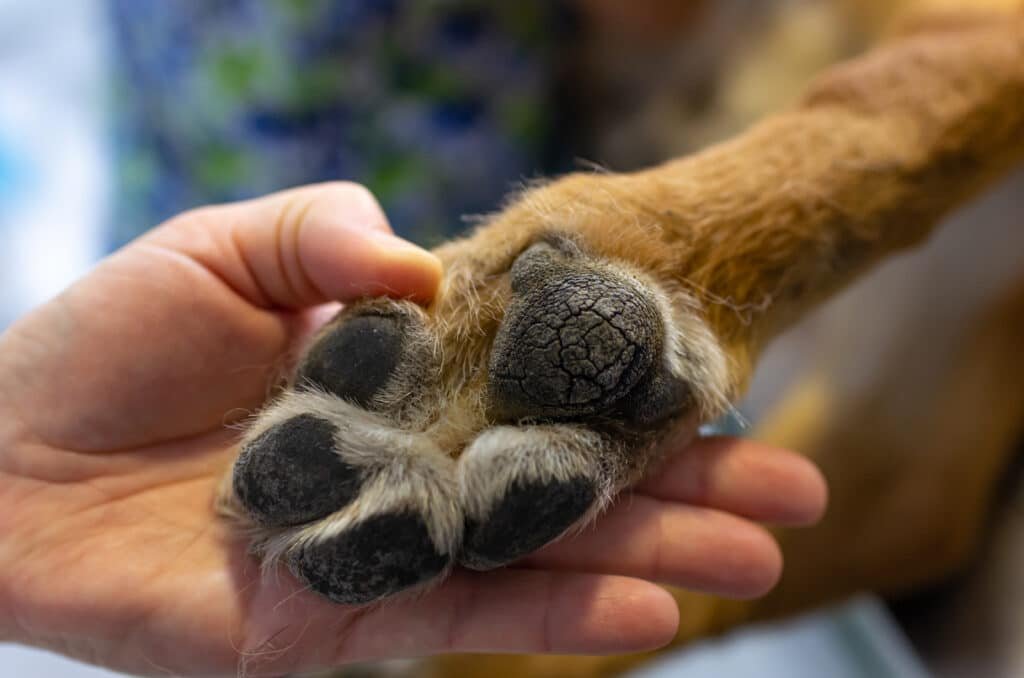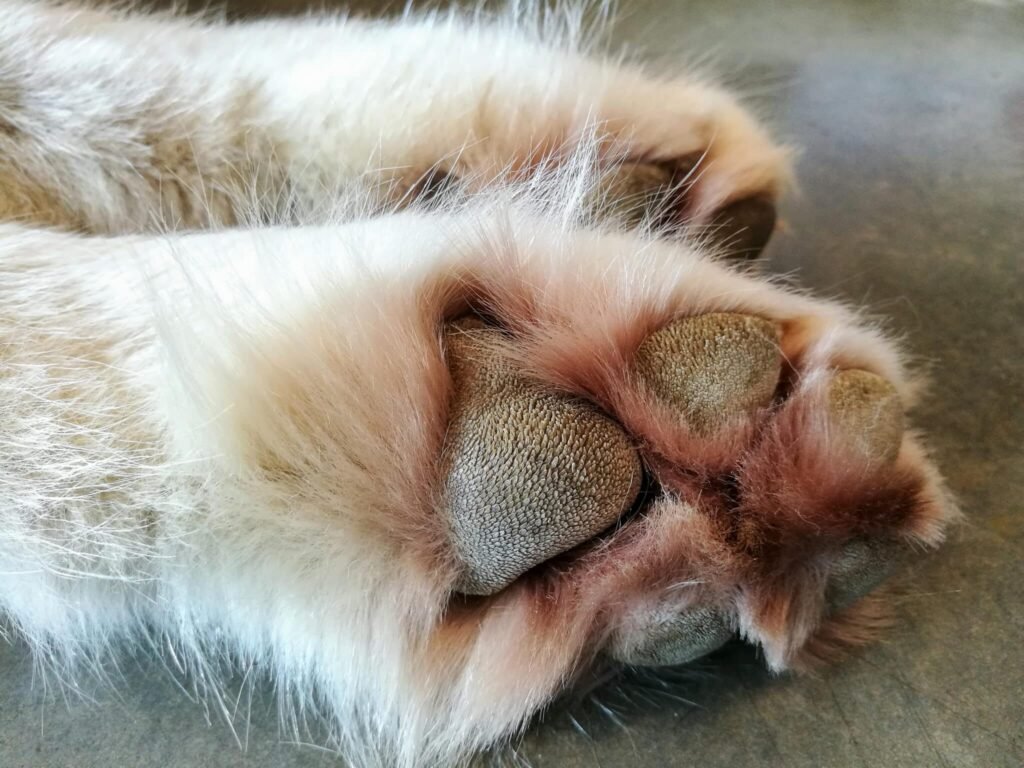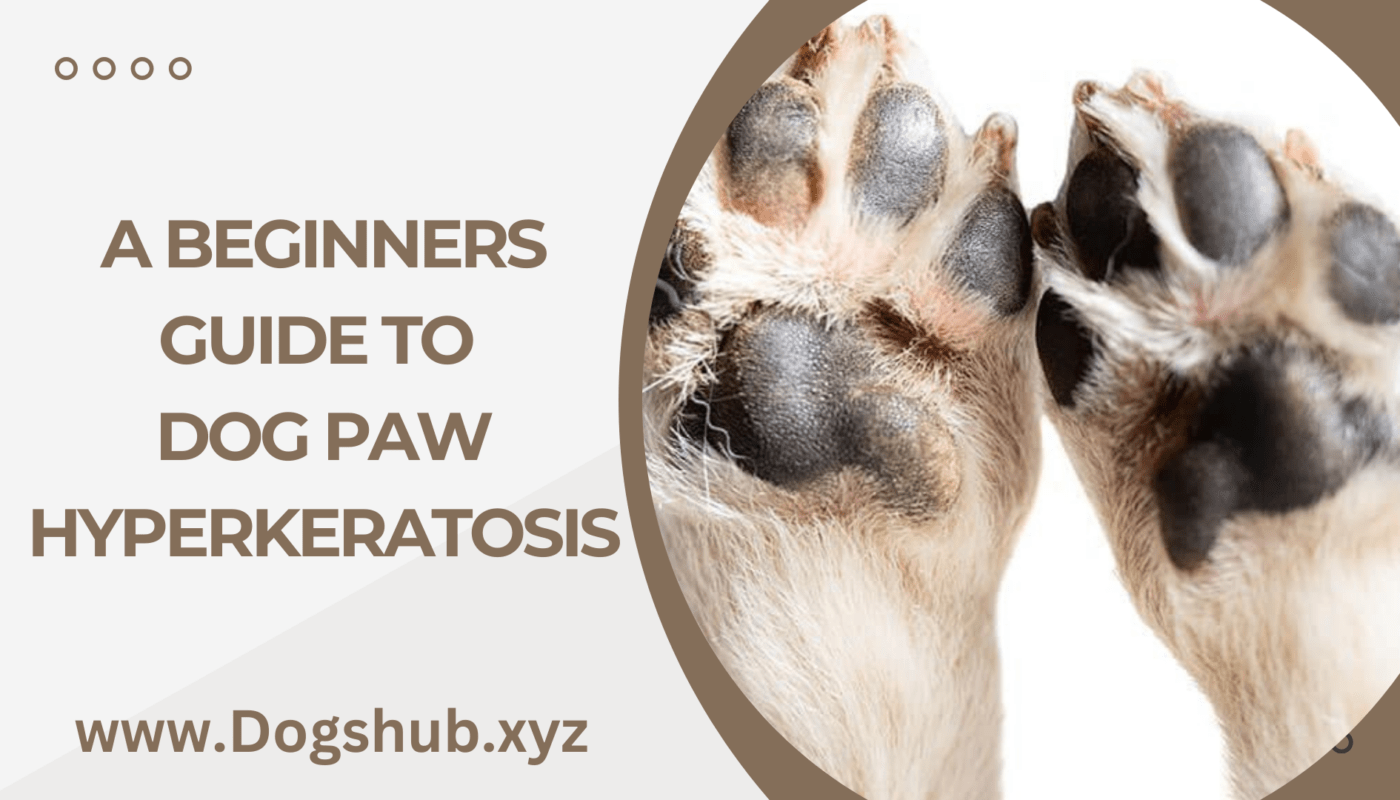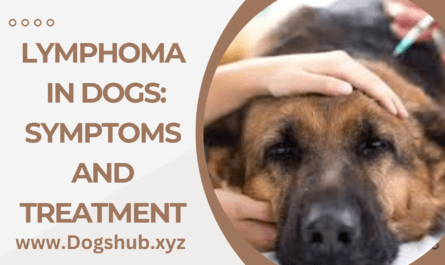Do your pet’s paws have hair? pads on his paws? If so, you could be suffering from hyperkeratosis of the dog’s paws. If you take a closer look at you can see that the “hair” on your furry pet’s pads are not in fact hair but rather dry skin.
The condition, commonly called pet feet that are hairy is a skin problem that typically affects the pads on your paws. It may cause discomfort and pain for our furry companions.
Read on to get a deeper understanding of dog paw hyperkeratosis. Find out its causes and what are its symptoms and the desirable way to treat it and the accurate way to avoid it completely.
WHAT IS HYPERKERATOSIS?

Hyperkeratosis is a condition of the skin which causes the skin to become hard and thick. It is caused by the body’s excess production of a protein known as Keratin. Both dogs and humans are susceptible to suffering from it. In dogs, it could cause problems with their paw pads or the nose.
If you’re not familiar with Keratin, it’s a protein that is the basis of hair nails, nails, horns claws, and hooves. When your pet’s body produces excessive amounts of keratin, it could cause dry, hard and crusty substance appearing on specific body areas.
While it is possible to be found on the nose of dogs or (sometimes) ears but it’s mostly found on the pads of paws. As it grows it appears like hair growing out of the paws of your dog and hence the name hairy dog feet..
IS PAW HYPERKERATOSIS PAINFUL FOR DOGS?
At first the hyperkeratosis of the dog’s paw isn’t painful. If it’s not treated, it could become. Hyperkeratosis may progress to the point that your dog will be incapable of standing or walking because of the pain that comes with the skin problem.
As it gets worse it could cause discomfort to your pet. It’s excellent to constantly examine your dog’s paws for dry and hardened skin, particularly if it’s an older dog.
IS PAW HYPERKERATOSIS DANGEROUS AND LIFE THREATENING?
Fortunately, hyperkeratosis of the dog’s paw generally isn’t dangerous or life-threatening. However, in certain instances it could cause problems or infections when you don’t address the problem immediately and in a timely manner.
DOG PAW HYPERKERATOSIS CAUSES

The condition is not transmissible, but there are many causes that could cause it. They include:
1. GENETICS
Dog paw hyperkeratosis may be an inheritable condition. It means that some dogs are more genetically prone to it than other. For instance, Labradors can suffer from it due to an abnormality in their genes known as nasal parakeratosis.
2. AGE
Contrary to what happens to humans The skin of dogs gets thicker with age, and is particularly thick on pressure points such as the paws. This causes the formation of calluses which can lead to hyperkeratosis of the dog’s paws.
3. CANINE DISTEMPER
The most common Canine Distemper’s signs is hyperkeratosis on the dog’s paws. This life-threatening condition causes swelling of the skin on the pads of the dog’s feet and, sometimes, even in the nasal area. This is why canine distemper is often referred to in the form of “hard pad” disease..
It is important to remember that dogs who have been appropriately immunized for Canine Distemper as puppies are less susceptible to skin disease.
4. PEMPHIGUS FOLIACEUS
It is a frequent autoimmune condition that is found in older and middle-aged canines. It can also lead to for the growth of hyperkeratosis in the dog’s paws.
5. ZINC DEFICIENCY
Certain breeds of dog are susceptible to zinc deficiency due to the fact that they can’t absorb this mineral through food or other ways. This could cause zinc-responsive dermatosis that can lead into dog paw hyperkeratosis.
6. LEISHMANIASI
It is a parasitic disease caused by the bites of sandflies. One of the signs is the hyperkeratosis of the dog’s paw as well as joint inflammation, muscle pain and swollen testicles.
DOG PAW HYPERKERATOSIS SYMPTOMS
Hyperkeratosis among dogs, as previously mentioned, can affect the nose or paws. In rare instances it may also affect other body parts such as the ears, elbows, or even the elbows. It is however typically found in dog’s pads on the paws.
At first it appears like hair growing from the pad of paws. As it develops the skin becomes thicker more hard and more crusty.
Apart from that dry, crusty, and dense layer of skin other signs of dogpaw hyperkeratosis are:
- Blood, fissures, and cracks
- The loss of color of the skin in the affected region
- Paws are frequently licking
- Limping
- Reduction in physical activity
- Secondary infections
Like all health issues It is crucial to recognize hyperkeratosis of the dog’s paws as early as is possible. Then, it will benefit you provide your dog with the attention and attention it needs.
If you see any of these symptoms on your pet, make an appointment with the veterinarian immediately.
DOG PAW HYPERKERATOSIS TREATMENT
However, once your dog is diagnosed with hyperkeratosis it’s likely to recur. As of now there’s no cure for this condition, just methods to treat it.
Here are a few choices you could consider to benefit deal with dog paw hyperkeratosis:
1. TREAT THE UNDERLYING DISEASE
As we’ve mentioned before that dog paw hyperkeratosis may be due to a range of health problems. If your dog suffers from an issue that is causing the condition of the skin, treatment should be focused on resolving the issue.
For instance in the case of a dog with pemphigus, your veterinarian will treat it using medications that suppress the immune system.
2. TRIM THE EXCESS SKIN
For warrant that hyperkeratosis does not cause your pet uncomfortable and uncomfortable, it’s excellent to see your veterinarian to have the extra skin cut. If you’re confident that you’re able to do it on yourself at home, request your vet to guide you on the proper way to trim it correctly and securely.
But do not endeavor to make this happen without the approval of a vet and direction. For if you try, it may cause more harm than good.
3. SOAK YOUR DOG’S FEET IN EPSOM SALT
One home remedy is easy to implement to benefit treat mild hyperkeratosis in the paws of your dog at home is to do a foot soaks.
The dog’s feet should be soaked in warm water containing Epsom salts for fifteen minutes can benefit to soften the keratin that is accumulated. Additionally, the water generated by the bath will not just soften the skin, but will also ease the discomfort caused by the skin problem.
After bathing be sure to dry your dog’s paws well to avoid further infections.
4. APPLY OINTMENT TO PAWS
A balm, an ointment or butter specially designed for dogs is a cost-effective but efficient way to control mild hyperkeratosis of the dog’s paws.
Balms for paws benefit to moisturize your dog’s dry skin and ease the discomfort of your dog while walking or performing any other physical exercise. Also, applying it daily, two to three times per daily can benefit boost the paws of your dog’s condition more quickly.
5. CONSULT YOUR VETERINARIAN
In the case of severe conditions in the event of a severe condition, it is accurate to consult your doctor to determine the desirable option. In the case of severeness of the problem they might prescribe oral or topical medication such as moisturizers, exfoliants and moisturizers to treat secondary infections.
DOG PAW HYPERKERATOSIS PREVENTION
At present, there is no method to stop hereditary hyperkeratosis. There are, however, several ways to treat the non-genetic variant.
Here are some suggestions to decrease the likelihood of a skin condition appearing on your dog’s paw pads:
- Always check your dog’s paws regularly. It’s much easier to treat and heal hyperkeratosis if it’s detected it early in its stage of development.
- Apply a moisturizing balm. Even if your dog’s paw pads aren’t scaly and dry but it’s perfect to ensure they are hydrated constantly. So, they’re less susceptible to hyperkeratosis.
- Cut your dog’s nails. Doing this helps keep your dog’s paws tidy and healthy. Additionally, trimming your dog’s nails makes sure that your dog’s nails don’t scratch the ground or cause accidents.
- Wear dog-friendly socks or boots. If you’re walking in the park, you’re perfect for your pet to have his paws tidy and clear of rough surfaces. The less itchy the pads of your dog’s paws are more comfortable for them.
- Vaccinate your dog against Canine Distemper. As we’ve mentioned the hyperkeratosis of the dog’s paws is among the signs of this disease that is life-threatening. Make sure you immunize your pet against the disease.
CONCLUSION
The condition of hyperkeratosis in the dog’s paws may not be life-threatening or hazardous however, it’s an issue that must be considered a serious health issue.
If not treated immediately and correctly If it is not addressed immediately, it can cause serious discomfort and pain to dogs, particularly older breeds, and could make it difficult for them to perform their normal activities. We hope this simple guide will benefit you deal with this skin condition so that your pet can live the life they deserve in a healthy and happy way!
Q&A
What is the perfect way to deal with hyperkeratosis that dogs have on their paws?
If this happens, apply a moisturizing balm on their paws the elbows, nose and paws. This will help to keep their skin soft and free of any cracks. Be sure to keep your bed cushioned and well-padded to protect the elbows and other places susceptible to excessive Keratin.
How do you remove hyperkeratosis?
Depending on the diagnosis, therapy can include corticosteroids, retinoids, topical anti-inflammatories, vitamin-D derivatives, phototherapy, and laser treatment.
How do I fix my dogs crusty paws?
Depending on the severity of your dog’s paws, you can use a dog balm or wax and then protect their paws with socks or dog booties. For less severe dry, cracked dog paws, simply using the balm or wax often and limiting exposure should help.




